|
Monday 26th June
to Sunday 2nd July 2023 |
| |
|
If you look towards the west just after dark,
it is still possible to see Venus close to the horizon, shining brightly at
a magnitude of around -4.3 with Mars a little above and to the left of it.
Mars will appear as a red dot and will not be as bright, with a magnitude of
+1.7 |
| |
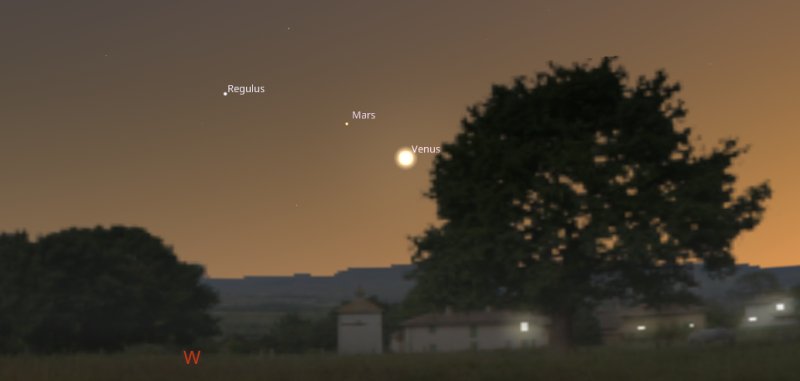 |
| |
|
A little further left again will be one of
the brightest stars in the night sky - Regulus - which is the alpha star in
the constellation of Leo the Lion. It will have a similar magnitude to
Mars, but without the reddish appearance. |
| |
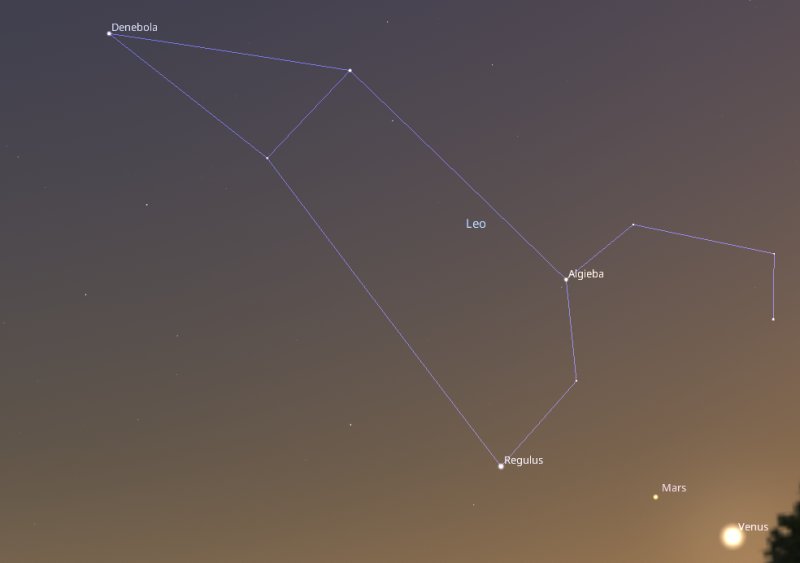 |
| |
|
I have mentioned binary stars before, where a
pair of stars are kept relatively close together by their mutual gravity and
the two stars orbit around each other. Some binary star systems are known
as "visual binaries" and the individual stars can be resolved in a
telescope. Others cannot be separated visually and astronomers instead
resort to measuring minute shifts in the stars' positions or their
brightness to calculate the presence of a binary. |
| |
|
Regulus is actually a quadruple star system,
but it is not possible to isolate the individual stars with your telescope,
so what you are really observing is the main star, Regulus A which is
approximately 79 light years away. |
| |
|
The constellation of Leo also contains an
asterism (or easily-recognisable shape) known as the "Sickle". It comprises
the stars that make up the lion's head and shoulders, resembling a backwards
question mark. |
| |
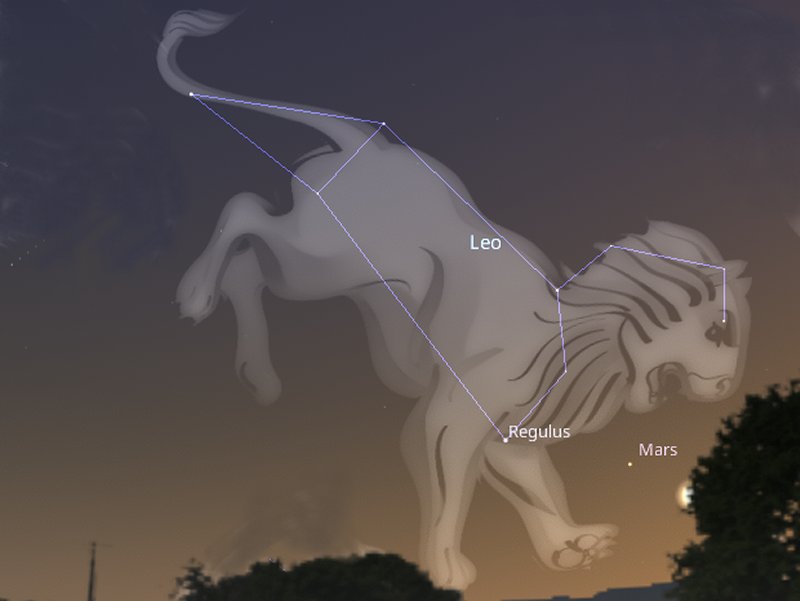 |
| |
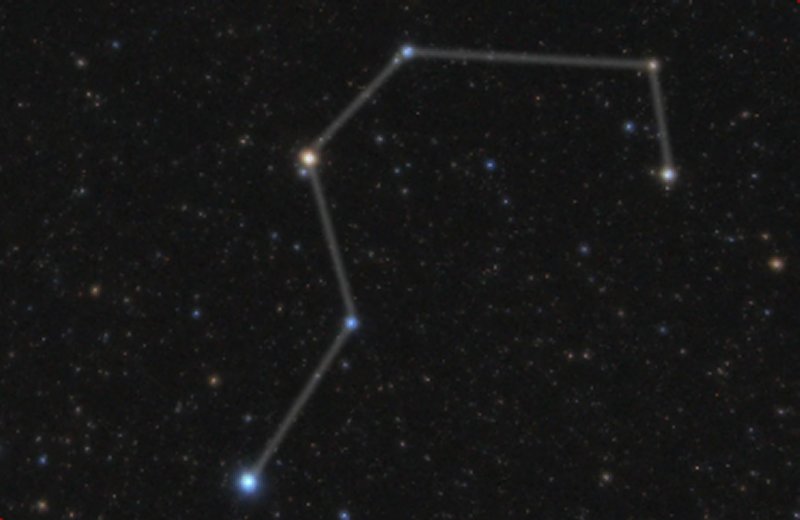 |
| |
|
Sickle asterism image courtesy of
Pete Lawrence |
|
Monday 19th to
Sunday 25th June 2023 |
| |
|
Wednesday 21st is the date of the summer
solstice, when the Sun reaches its most northerly or highest position in the
sky. The Earth is tilted 23.5 degrees on its axis or in other words, our
north and south poles are not straight up and down. On 21st, the northern
hemisphere reaches its maximum tilt towards the Sun as we orbit around it. |
| |
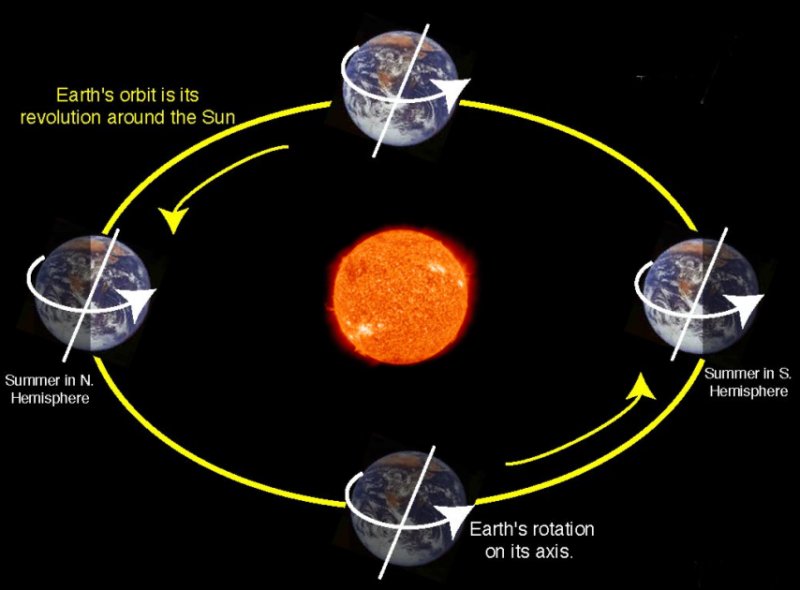 |
| |
|
Last week I suggested trying to identify an
asterism or shape known as the Summer Triangle. This coming week, how about
trying to find a teapot? I haven't gone completely mad..........it's
another well-known asterism that can be seen in the summer night sky! |
| |
|
Locate the constellation of Sagittarius which
will be close to the horizon towards the south. The constellation doesn't
rise above the horizon until after about 1am, so it will require a late
night. The major stars in Sagittarius make up the familiar teapot shape. |
| |
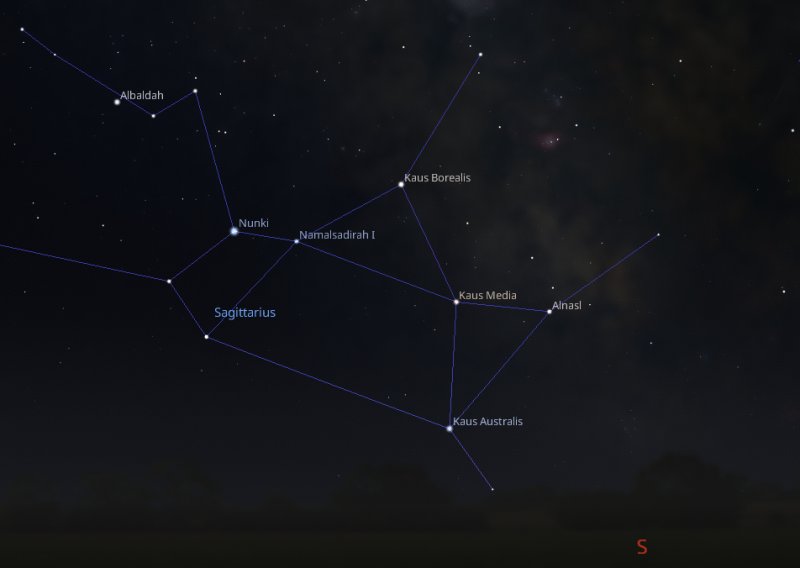 |
| |
|
In ancient Greek mythology, Sagittarius
represented a centaur archer with his bow and arrow. Three of the
constellation's stars begin with the name "Kaus" which translates to "bow".
Kaus Borealis means "north" which is at the top of the bow or top of the
teapot's lid. Kaus Media means "middle" and Kaus Australis means the
"southern" end of the bow. |
| |
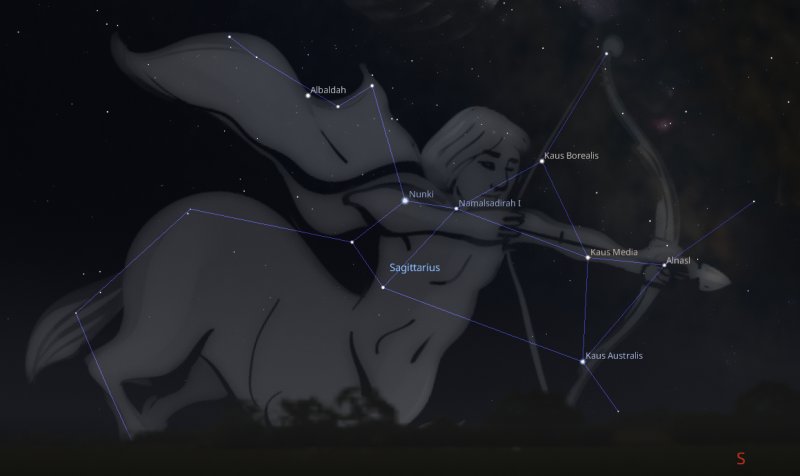 |
| |
|
Of course Sagittarius is one of the twelve
signs of the zodiac - a dozen constellations that the Ecliptic passes
through - an imaginary line drawn through the Earth and Sun as we orbit
around it every year. |
| |
 |
|
Monday 12th to
Sunday 18th June 2023 |
| |
|
Constellations are groups of easily-visible
stars that form an obvious pattern, typically resembling an ancient
mythological animal or object. In 1922 the International Astronomical Union
officially recognised a list of 88 different constellations. It is
important to appreciate though that a particular constellation actually
covers a whole area of the sky. For example, the constellation of Ursa
Major includes numerous stars and even some Messier deep sky objects within
a portion of the night sky. |
| |
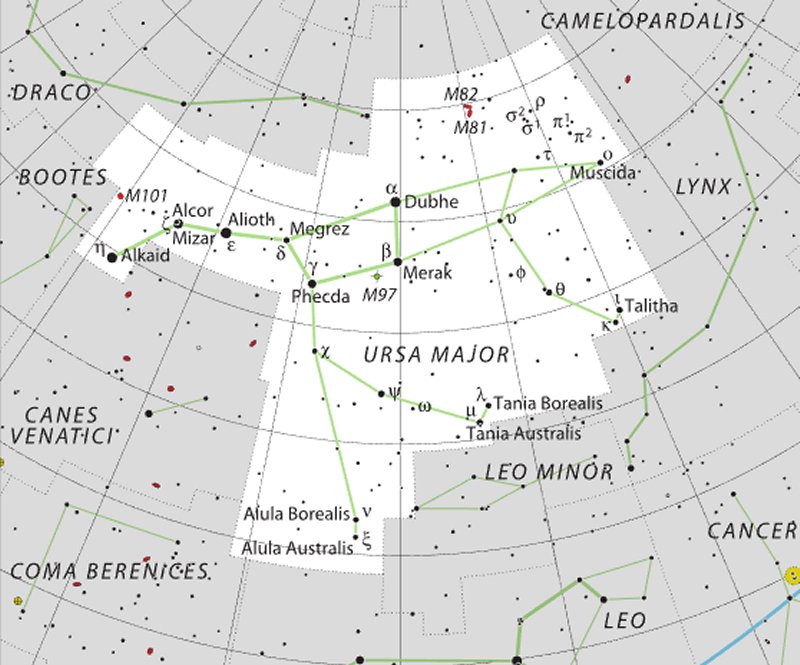 |
| |
|
Asterisms are specific patterns of stars that
may be within a constellation. Inside the constellation of Ursa Major is
the asterism known as the Big Dipper - the seven bright stars that make up
the familiar "saucepan" shape. |
| |
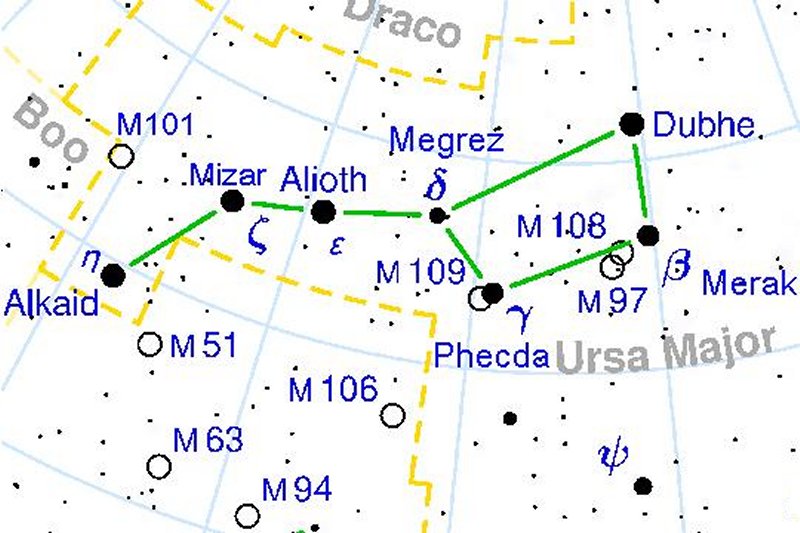 |
| |
|
Another popular and very large asterism is
known as the "Summer Triangle" and it is made up from three bright stars in
three different constellations: Deneb in the constellation of Cygnus, Vega
in Lyra and Altair in Aquila. |
| |
|
Try going outside just after dark next week
and look towards the east - see if you can make out the Summer Triangle
yourself. From a dark location you may notice a patch of faint cloud
running through the triangle - the Met. Office haven't got it wrong - you
are seeing the billions of faint stars that make up the centre of our Milky
Way galaxy! |
| |
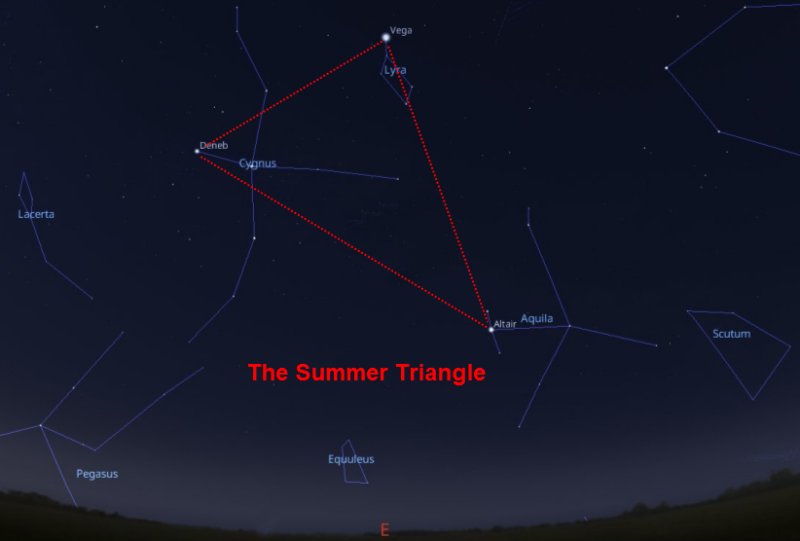 |
| |
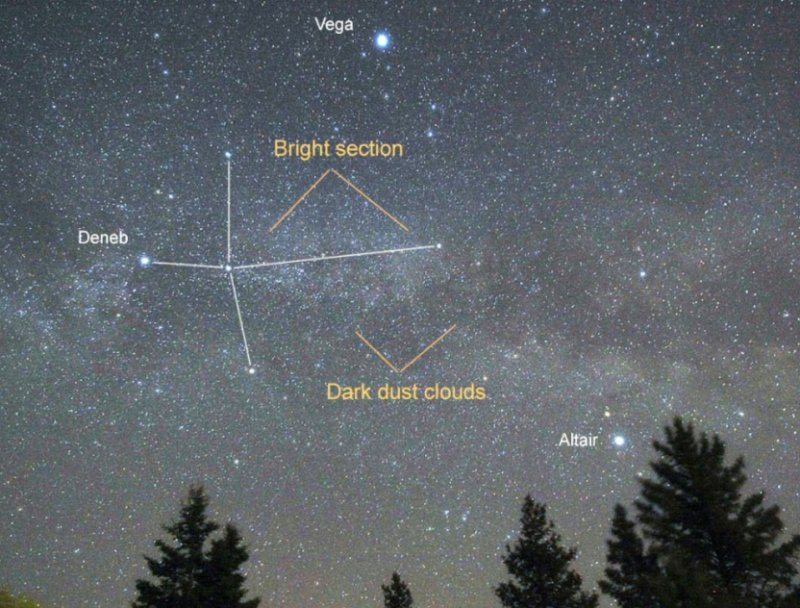 |
| |
|
This time of year is not great for astronomy
because there isn't much real darkness. On the morning of Saturday 17th we
have the earliest sunrise of 2023 which will be at 4.38am. That's not to be
confused with the summer solstice when the Sun reaches its highest point in
the sky - that takes place the following week, on Wednesday 21st. |
|
Monday 5th to
Sunday 11th June 2023 |
| |
|
The Moon will be just past its full phase, so
you could observe it becoming a gibbous and then quarter moon during the
course of the week, but you'd need to be an early riser as it doesn't pop up
above the south eastern horizon until the early hours of the morning. |
| |
|
Alternatively, Venus and Mars will still be
easy to spot just after dark if you look to the west. Venus was recently at
its greatest elongation, which is as far as it ever appears to get from the
Sun, about 45 degrees away from it. |
| |
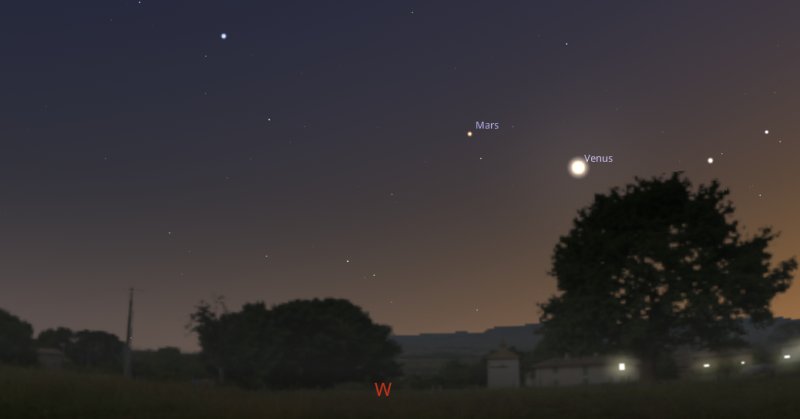 |
| |
|
Of course, with the Moon conveniently out of
the way in the late evening sky, it is an ideal opportunity to go hunting
for those faint deep sky objects with your telescope. |
| |
|
One good example is the planetary nebula
known as the Dumbbell Nebula or M27 in the Charles Messier catalogue. If
you look towards the east around 11pm, M27 will be located between the
bright stars Altair and Vega. The nebula has a magnitude of around 7.5 so a
telescope will definitely be needed. |
| |
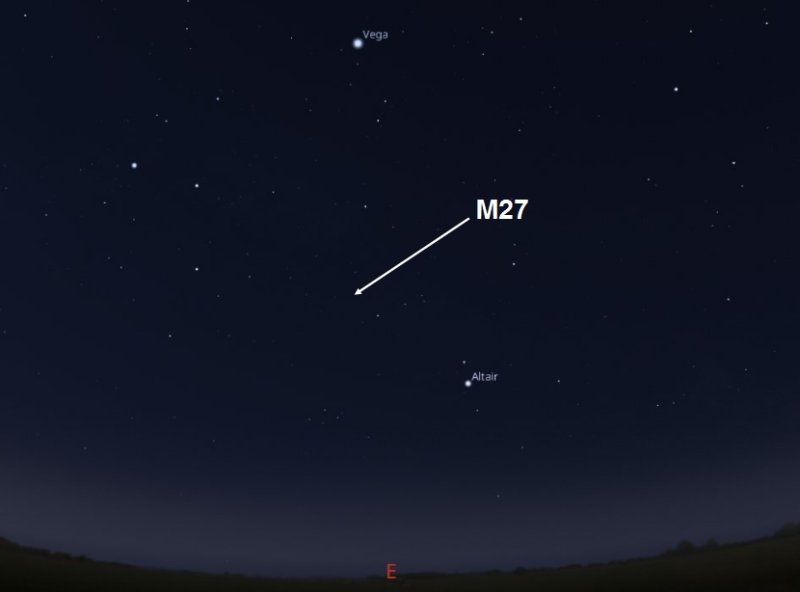 |
| |
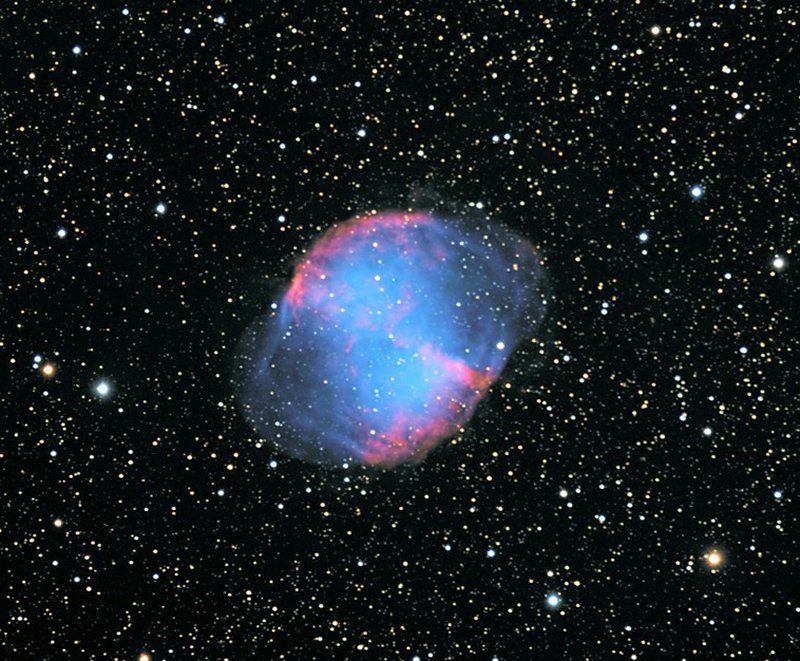 |
| |
|
Image courtesy of Wikipedia |
| |
|
Nebulas (or areas of cloudy gasses) are often
associated with the birth of new stars, but these are technically called
emission nebulas that emit light from their heavily ionized gas. A
planetary nebula like M27 is made from the gas ejected by a dying red giant
star. Nothing to do with planets at all or the creation of new stars, but
early astronomers with basic telescopes used to think they were planets
because they were small and round! |
|
Monday 29th May to
Sunday 4th June 2023 |
| |
|
On the morning of Monday 29th May, Mercury
will be at its greatest western elongation (or in other words its furthest
distance) from the Sun, so if you were looking towards the east just before
sunrise around 5am, there would be a good chance to see it. Best to not
risk using a telescope though as the Sun will be rising in the same
direction shortly afterwards. |
| |
|
If early mornings are not your thing, wait
until it gets dark on the Monday evening, when a slightly gibbous Moon will
be located towards the south west. It is a perfect opportunity to observe
the Clair-obscur lunar visual effect known as the Jewelled Handle. The
feature will be on the sunlight terminator to the north of the Moon's face. |
| |
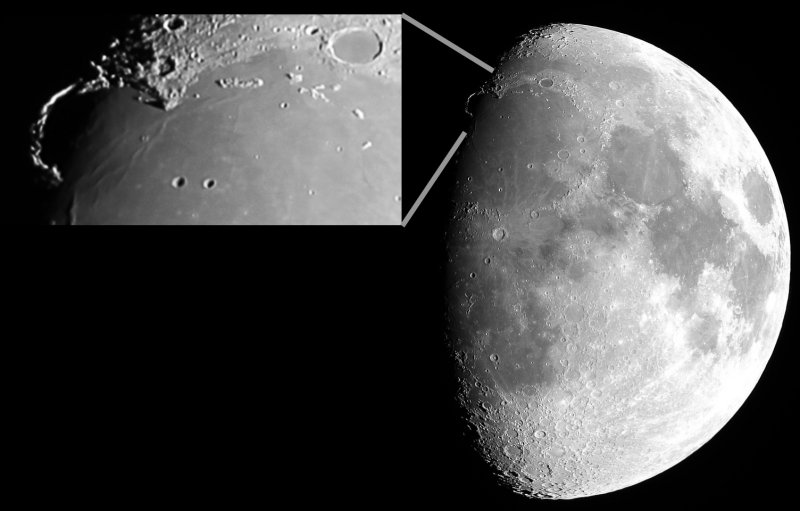 |
| |
|
Image courtesy of Peter Oden |
| |
|
Take your telescope outside and point towards
the west a couple of evenings later, around 11pm on Wednesday 31st to see
Venus setting below the horizon with Mars a little above it and to the
left. Venus will appear to be about 50%-lit.....a bit like a quarter Moon. |
| |
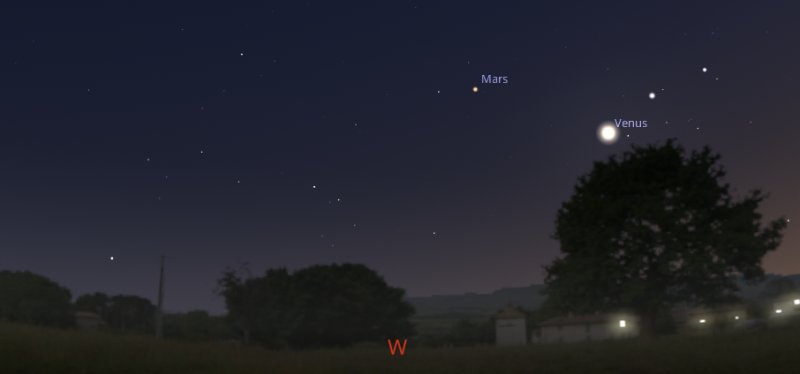 |
| |
|
Mars will be just to the right of the Beehive
open cluster of stars, also known as M44 in the Charles Messier catalogue of
deep sky objects. It is one of the nearest clusters to us, only about 610
light years away. |
| |
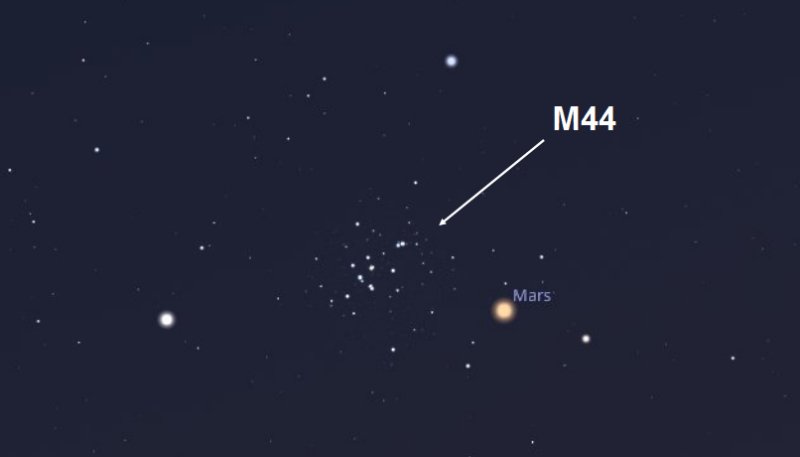 |
| |
|
Finally, on the evening of Saturday 3rd June,
we have a Full Moon. At 11pm it will be situated towards the south south
east, just above the red supergiant star Antares. |
| |
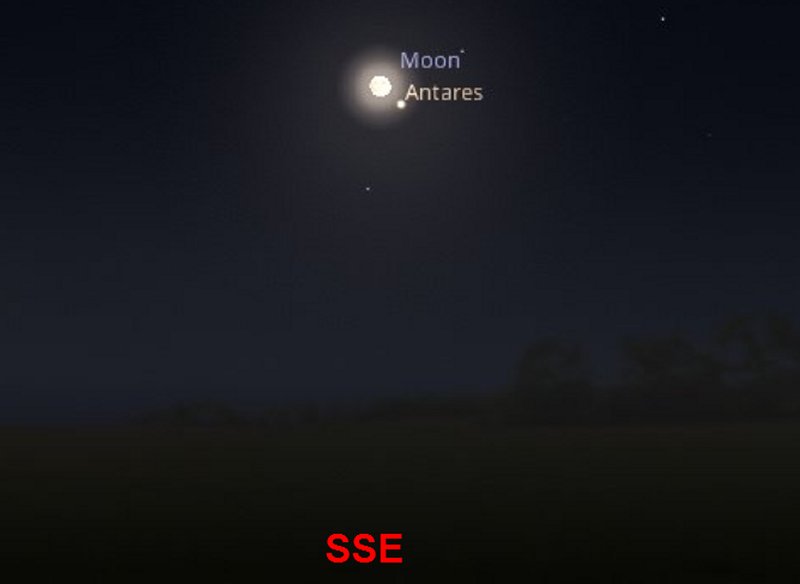 |
|
Monday 22nd to
Sunday 28th May 2023 |
| |
|
Venture outside just after dark, say around
10pm, on Wednesday 24th and there is a great viewing opportunity if you look
towards the west. A 25%-lit waxing Crescent Moon will be just above planet
Mars. Mars has a magnitude of around +1.5 at the moment, so it will be
easy to spot with the naked eye and it has an obvious reddish tint. |
| |
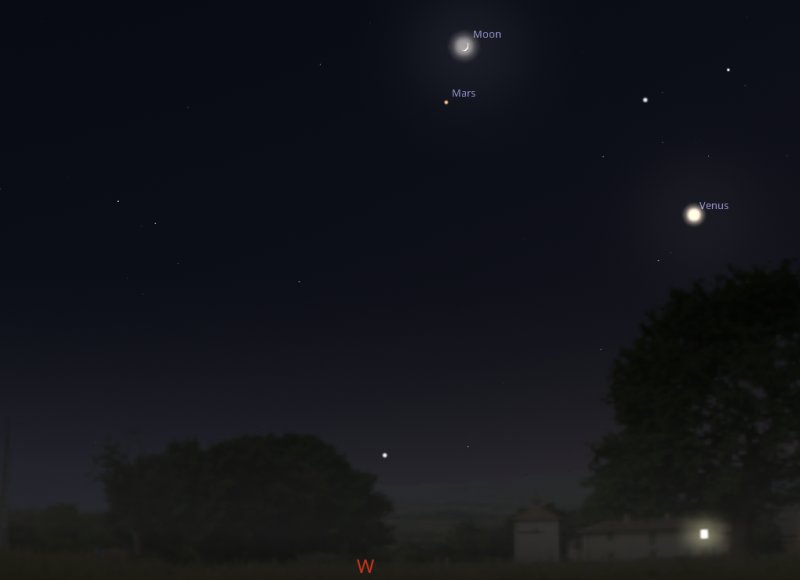 |
| |
|
Looking to the right of the pair and a bit
further down, Venus is still spectacular, shining very brightly. If you aim
even a small telescope at Venus, it is possible to see its phase and the
planet currently appears to be about 50%-lit or in other words, it will look
like a tiny Quarter Moon. |
| |
|
The evening of Saturday 27th is a chance to
spot one of the Clair-obscur lunar visual effects in your telescope - the
Stars of Aristillus. The effect is caused by sunlight reflecting from the
peaks in the middle of crater Aristillus. The whole crater is only 55Km in
diameter and it is estimated to be over 1.1 billion years old! Around 10pm,
the Moon will be located towards the south west. The crater will be on
the sunlight terminator, a little above the centre of the Moon's face. |
| |
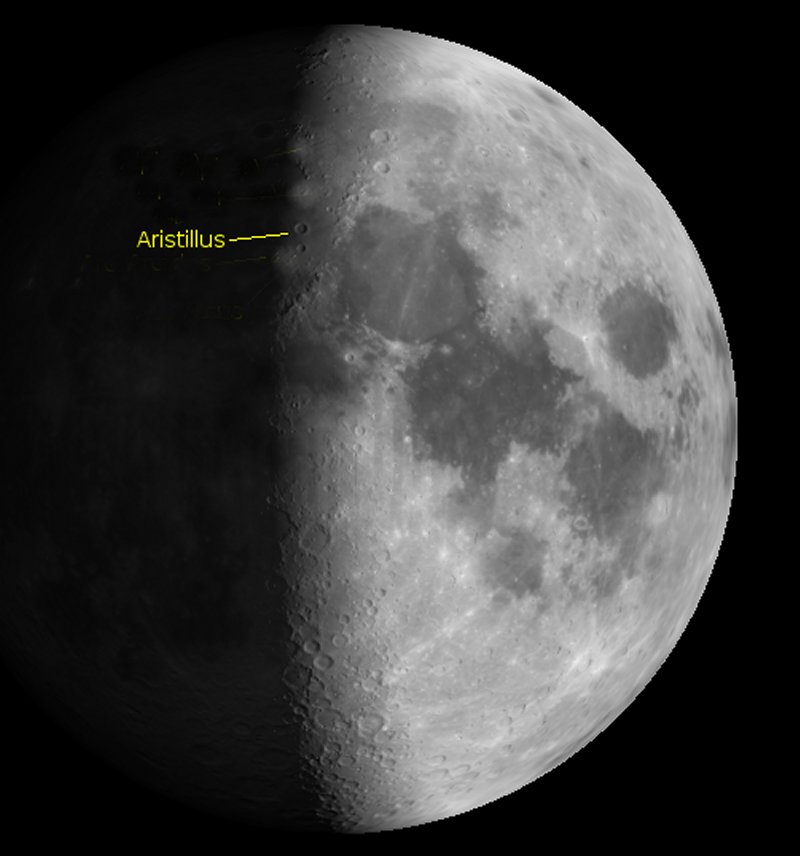 |
| |
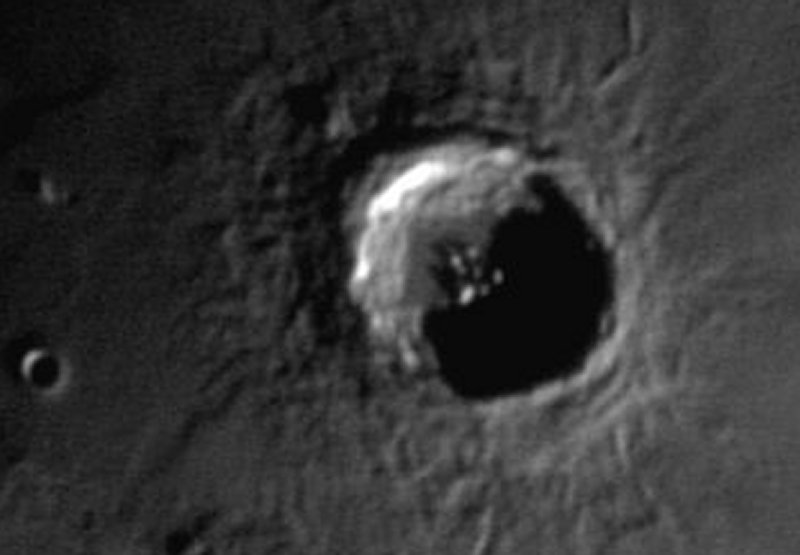 |
| |
|
Around this time of year is the start of the
Noctilucent Cloud season. These night-shining clouds are caused by ice
crystals in the upper atmosphere scattering light during astronomical
twilight, so are viewable towards the north west horizon for up to a couple
of hours after sunset. Similarly, they can be detected a couple of hours
before sunrise if you are looking towards the north east. |
| |
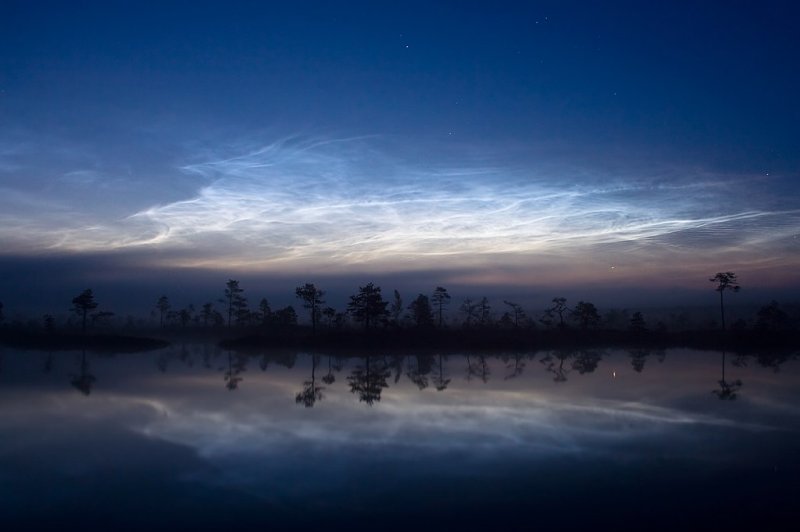 |
|
Monday 15th to
Sunday 21st May 2023 |
| |
|
How about a daytime astronomy challenge for a
change? Between 2 and 3pm on Wednesday 17th a rare Lunar occultation of
Jupiter occurs when the gas giant planet is obscured from our view by the
Moon. Well at least it would be if you lived in the north of the country!
From southern latitudes like down here in Somerset, the pair will just
appear to get very close together. |
| |
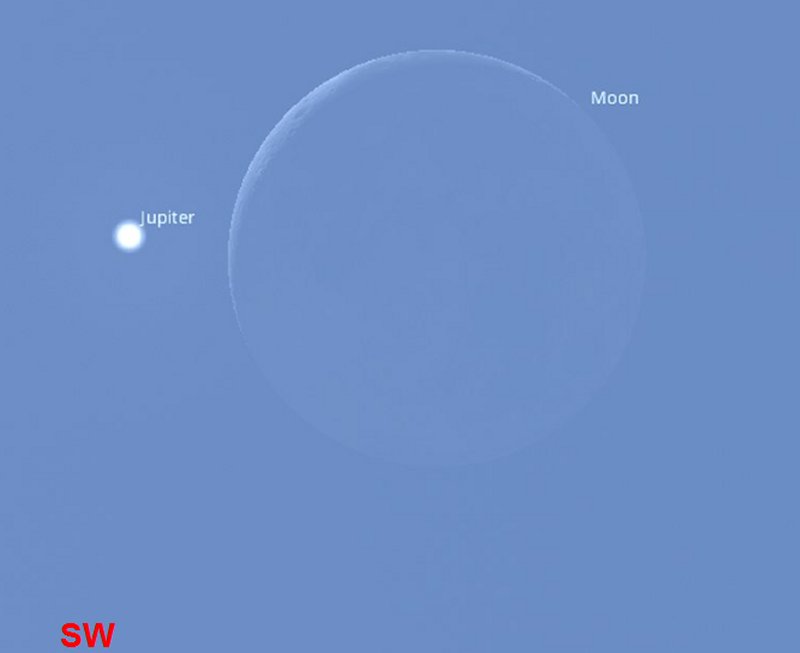 |
| |
|
But hang on.....it will be daylight! The
Moon will be visible to the naked eye towards the south west, but quite hard
to see as it will only be a thin 7%-lit waning crescent shape. Spotting
Jupiter to the left of the Moon will require binoculars or a telescope, but
there is an inherent danger in doing this as the Sun will only be a few
degrees to the left of them and you must never catch even a brief glimpse of
the Sun in an optical instrument. Because binoculars and telescopes collect
light and then magnify it, accidentally doing this with the Sun would cause
instant and permanent blindness. |
| |
|
So how can it be done safely? Either stand
behind the wall of your house with your binoculars or set-up your tripod
behind a fence so that you are in the shadow of the Sun, but have a clear
view to the right of it. That way, if you point towards the Sun by mistake,
you will only be looking at a blank wall. I cannot stress enough how
important this safety measure will be! |
| |
|
There is one good opportunity so spot the
International Space Station next week on Tuesday 16th at 12.13am when the
ISS will appear in the west and spend six minutes passing almost directly
overhead before disappearing towards the east. |
|
Monday 8th to
Sunday 14th May 2023 |
| |
|
The brightness or magnitude of most stars is
pretty constant. They only twinkle because the light being radiated from
them is distorted by our atmosphere, but their overall magnitude remains the
same night to night. Some stars are classed as "variable stars" and these
can vary considerably in magnitude - some stars swell and shrink in size and
others may have their light partially blocked from reaching us as an
exoplanet orbits around them. |
| |
|
This week try having a look at one such
variable star, R Coronae Borealis which is located towards the centre of the
"U-shaped" constellation Corona Borealis. Changes in its chemical
composition mean the star can vary between a magnitude of +5.7 at maximum
when it is just visible with the naked eye, down to a minimum of +15 which
is serious telescope territory! |
| |
|
If you go outside around midnight on 10th or
11th, the Moon will have not yet risen above the horizon and Corona Borealis
will be found high up towards the south east to the right of the
constellations Cygnus "the Swan", Lyra with its bright star Vega and
Hercules. Will you be able to see it? |
| |
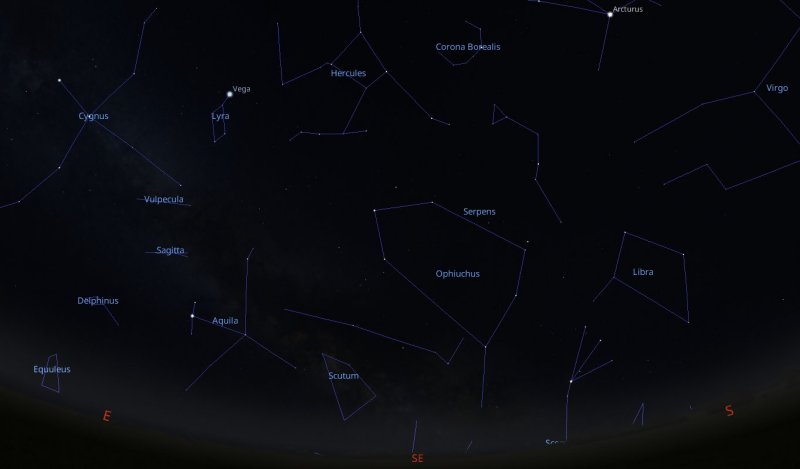 |
| |
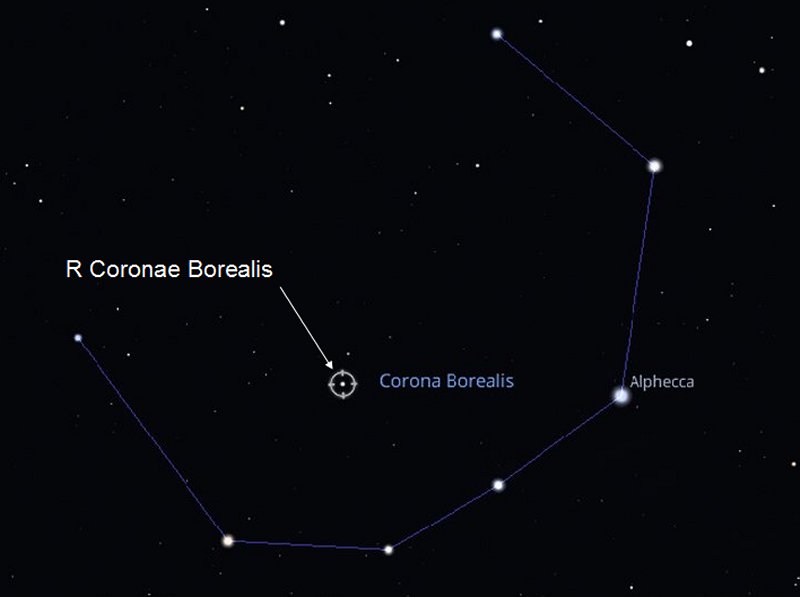 |
| |
|
Closer to home and definitely not needing a
telescope, there are some excellent opportunities to observe the
International Space Station next week, but you will have to stay up late.
The dates for your diary are Thursday 11th at 2.40am, Friday 12th at 1.52am
and Saturday 13th at 1.01am. In each case, the ISS will appear over the
horizon to the west and spend 6 - 7 minutes passing almost directly overhead
before disappearing to the east. |
|
Monday 1st to
Sunday 7th May 2023 |
| |
|
The coming week is not ideal for trying to
observe faint deep sky objects because we are near a Full Moon which
produces too much light pollution for serious observing. Instead I'm going
to concentrate on a few brighter targets. |
| |
|
If you go outside around 10pm on Friday 5th
and look to the west, it is still possible to see Venus shining brightly as
it begins to set below the horizon. Viewed through a telescope, Venus shows
phases just like our Moon and you should see it as what appears be a quarter
phase. Above and to the left of Venus will be the red planet Mars. |
| |
|
Still looking to the west, try to spot four
of the brightest stars in the night sky, forming a large parallelogram
shape. The red giant Betelgeuse will be close to the horizon, due west.
Capella will be above and to the right of Venus. Pollux will be a little
above Mars. Finally, Procyon will be down and to the left of Mars.
|
| |
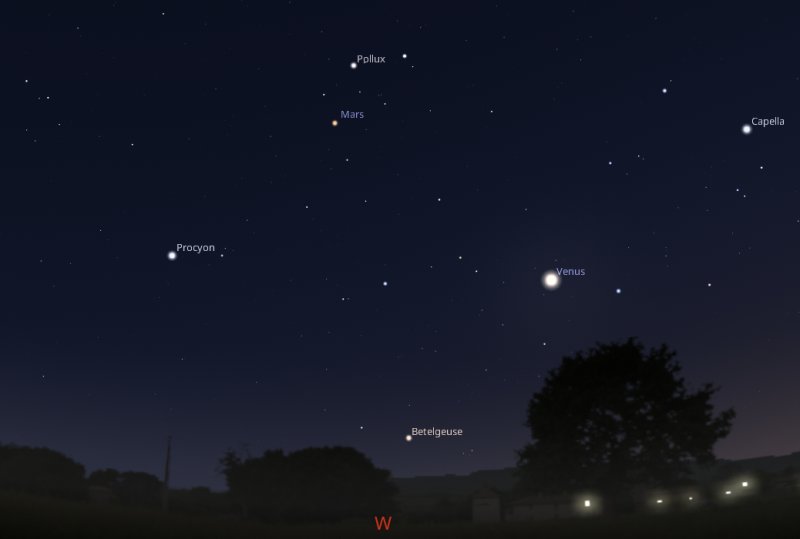 |
| |
|
When you've had enough of identifying
geometric shapes, turn your gaze towards the south east and a Full Moon will
have just risen above the horizon. |
| |
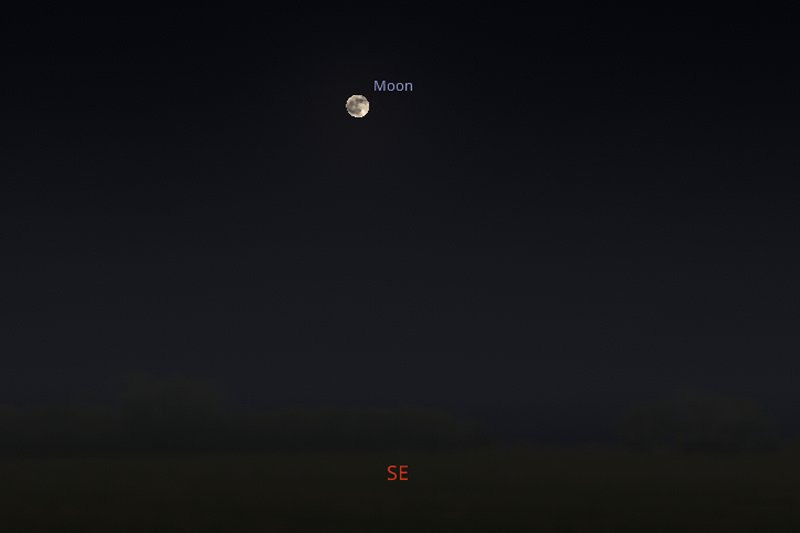 |
| |
|
Early morning on Saturday 6th and Sunday 7th
is the peak of the Eta Aquariid meteor shower, but as that is only a couple
of days past the Full Moon, the viewing of any shooting stars will not be
great. If you are up around 4am, the constellation of Aquarius briefly pops
up above the horizon towards the east south east. Even if the radiant point
of the shower has dipped below the horizon again, it should still be able to
see the meteors streaking across the sky before dawn. |
| |
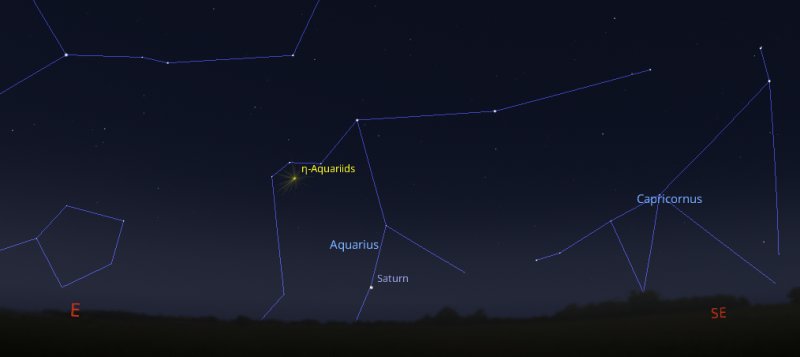 |




























